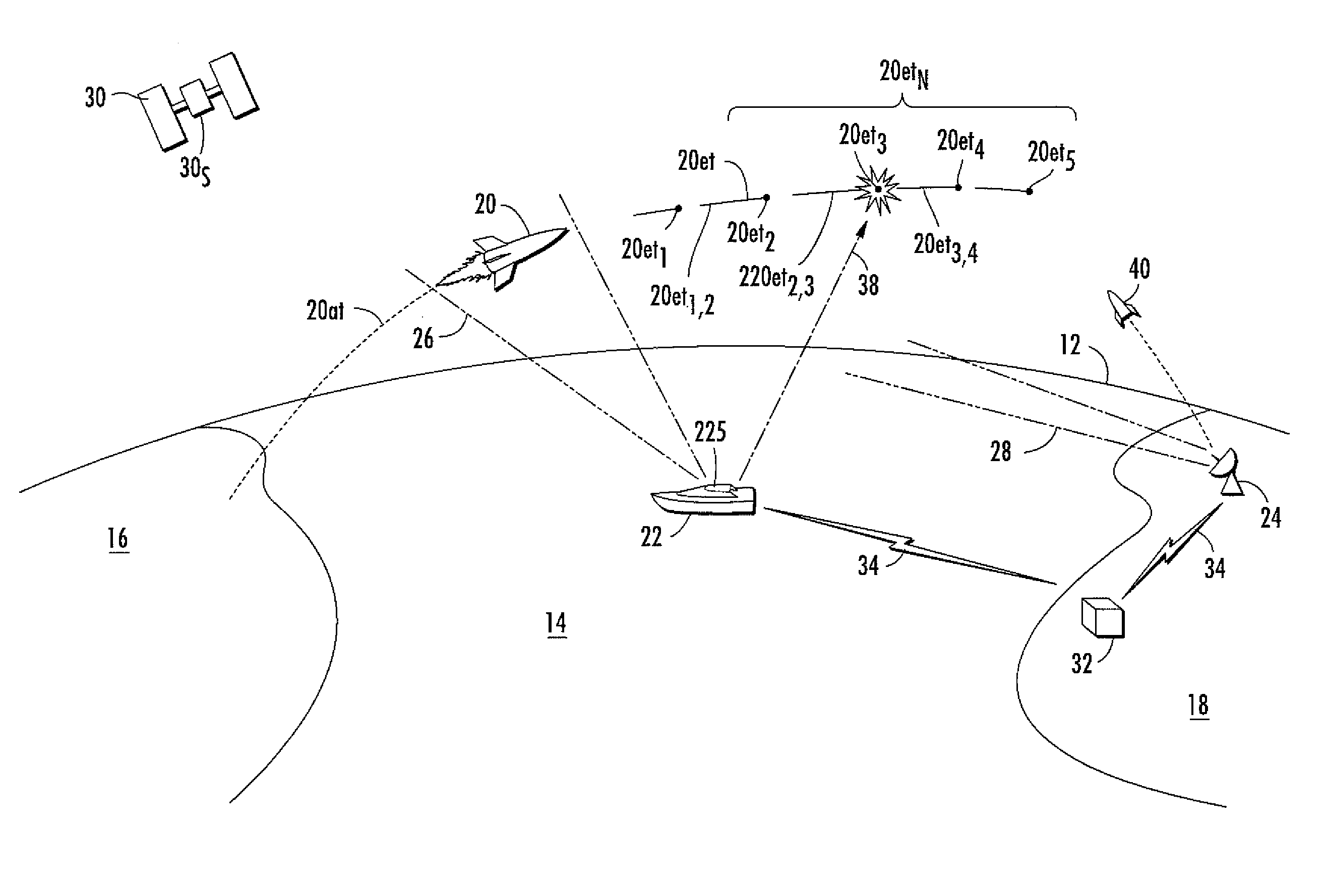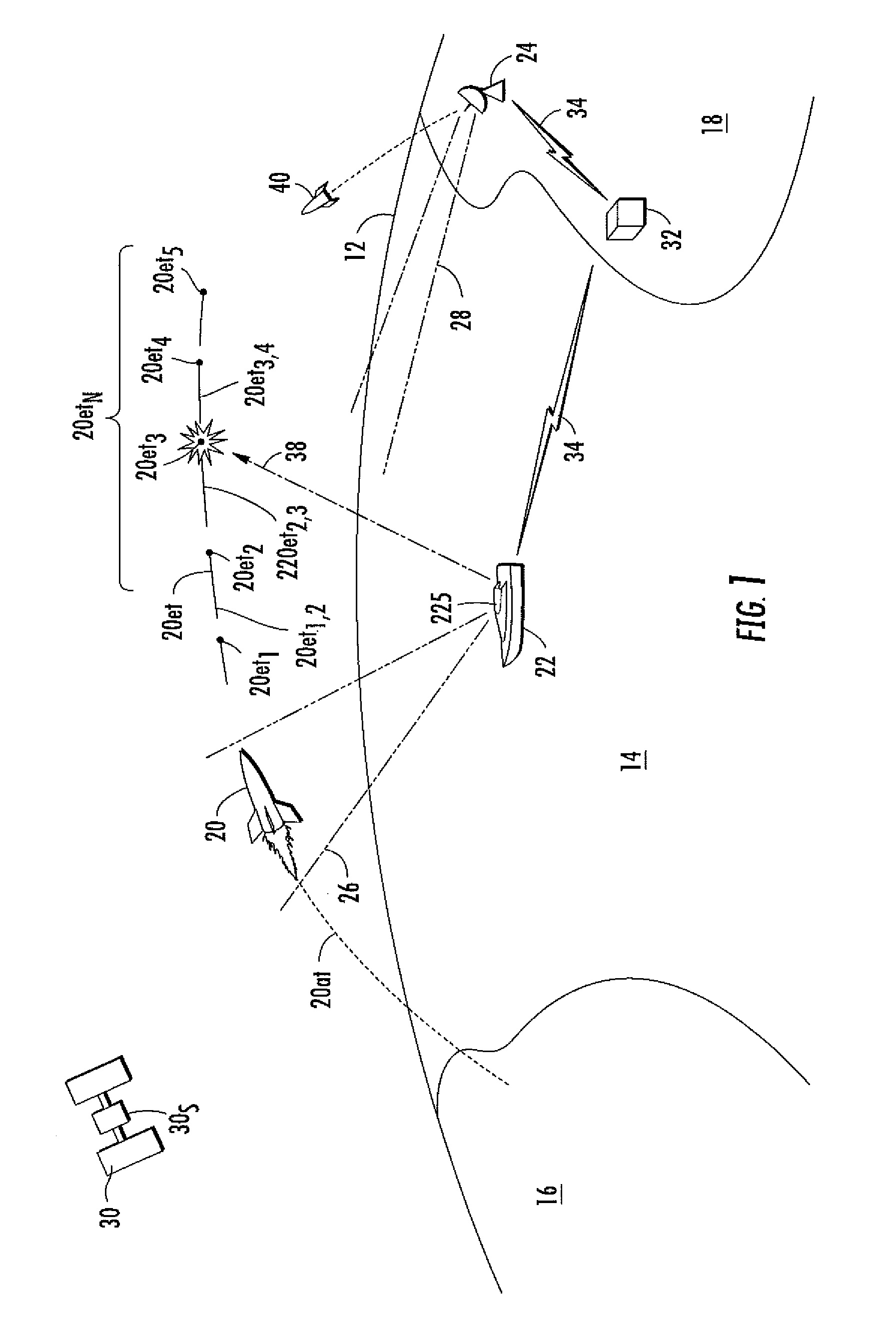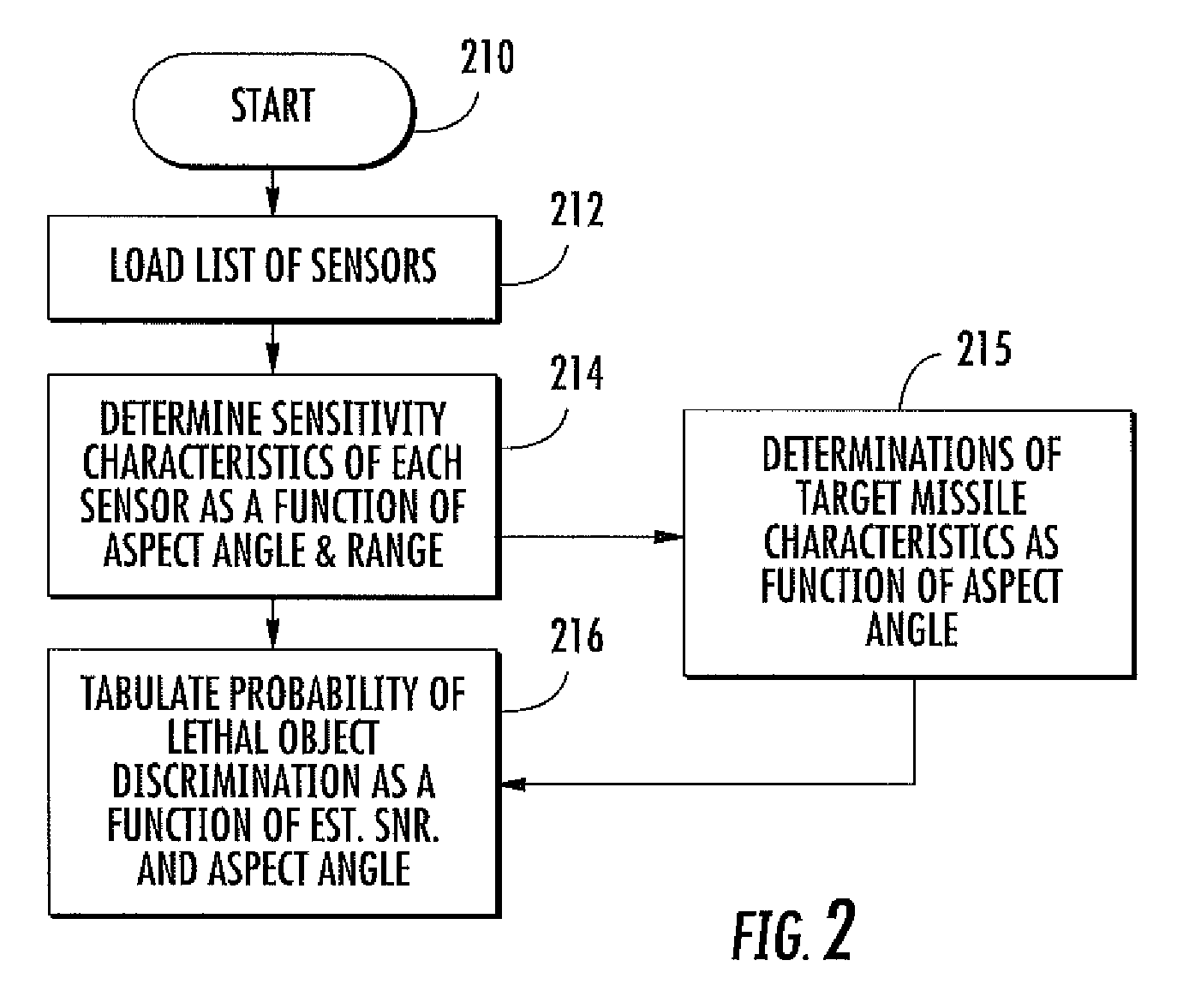Missile tracking with interceptor launch and control
a technology of missile tracking and launch control, applied in direction controllers, instruments, using reradiation, etc., to achieve the effect of estimating the signal-to-noise ratio
- Summary
- Abstract
- Description
- Claims
- Application Information
AI Technical Summary
Problems solved by technology
Method used
Image
Examples
Embodiment Construction
[0012]FIG. 1 is a simplified view of a portion of the Earth's surface, illustrating a horizon 12, a marine or ocean portion designated generally as 14, a first land mass designated generally as 16, and a second land mass designated generally as 18. In the scenario of FIG. 1, a hostile missile 20 was launched from land mass 16 and followed an actual track illustrated as 20at. One or more sensors detect and track the target missile 20. A first sensor illustrated as 22S is mounted on a friendly ship 22, and a second land-based sensor is illustrated as 24. The sensors may be radar sensors, but may also be of other types, such as a satellite-borne Overhead Non-Imaging InfraRed (ONIR) sensor 30S on a satellite 30. Sensor 22S scans or views over an angle illustrated as 26, which includes the hostile missile 20. Land-based sensor 24 also scans the region (28).
[0013]In the scenario of FIG. 1, the various sensors communicate with each other and with a control center, illustrated as a block 32...
PUM
 Login to View More
Login to View More Abstract
Description
Claims
Application Information
 Login to View More
Login to View More - R&D
- Intellectual Property
- Life Sciences
- Materials
- Tech Scout
- Unparalleled Data Quality
- Higher Quality Content
- 60% Fewer Hallucinations
Browse by: Latest US Patents, China's latest patents, Technical Efficacy Thesaurus, Application Domain, Technology Topic, Popular Technical Reports.
© 2025 PatSnap. All rights reserved.Legal|Privacy policy|Modern Slavery Act Transparency Statement|Sitemap|About US| Contact US: help@patsnap.com



